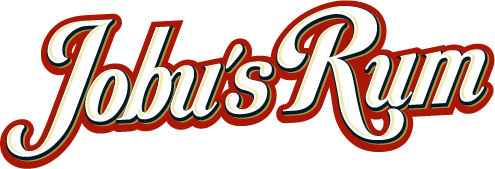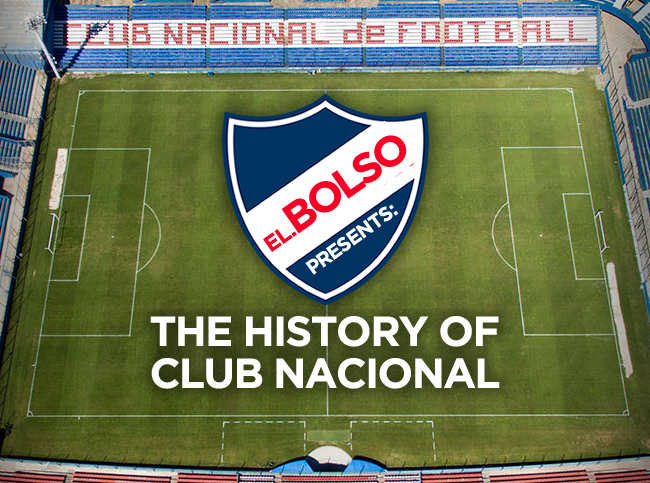Hello soccer fans! The big news this week is that Martín Lasarte just agreed to become Nacional’s new coach. Lasarte replaces Gustavo Munúa, who resigned because he felt he wasn’t getting enough support from the executive council (translation: I’m going abroad to make lots more money). Lasarte returns to the Nacional bench after a decade away; in his previous stint as coach, he stuck around for 2 years and won 2 Uruguayan League titles (the 2005 Especial calendar adjuster and the 2005/06 season), so here’s hoping he brings back some of that old magic with him.
Lasarte is also a former player, having worn the Tricolores jersey for one season in the late 80s. Now that may not seem like much, but 1988 was a pretty important year for El Bolso: Nacional’s third and last Copa Libertadores/Intercontinental Cup double. So, to honor Lasarte’s hiring, I’m going to dust off my History of Nacional series and talk about the last Uruguayan club team to win a Copa Libertadores, Nacional’s 1988 squad.
8 Years of Mediocrity
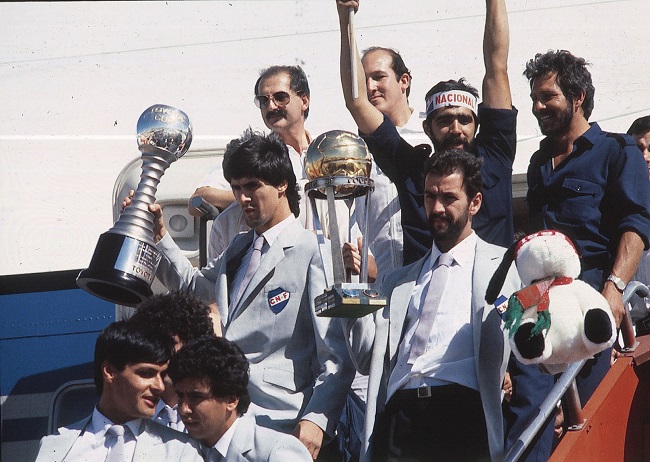
When we last visited this series, Nacional was on top of the world, having won the 1980 Uruguayan League and Copa Libertadores titles, as well as the 1981 Intercontinental Cup in Tokyo. However, the glory days didn’t last long, as that team broke apart pretty quickly thereafter. Key players like keeper Rodolfo “the Panther” Rodríguez and back line stalwart Hugo De León left to try their luck in Brazil, and prolific scorer Waldemar Victorino (that would bencurrent Tricolores defender and 2011 Copa América champion Mauricio Victorino‘s uncle) was kicked off the team for alleged off-the-field issues. Between 1981 and 1988 Nacional won just one league championship (in 1983), and that only happened after a spending spree that brought in several established stars who were mostly gone after that one season.
To make matters worse, traditional rival Peñarol was going through a rather successful period: league titles in ’81, ’82, ’85 and ’86, and, more importantly, international glory: 3 Copa Libertadores finals, 2 titles (’82 and ’87) and 1 Intercontinental Cup win in 1982. El Bolso was a wee lad at this time and let me tell you, it was rough being a Nacional fan in the mid-80s. As the 1987 season drew to a close, there was a feeling around the club that something had to be done to return the Tricolores to relevance; ensuring participation in the 1988 Copa Libertadores was the first step.
In those days, Uruguay had only 2 spots in the Copa, and they were doled out via a small tournament called the Liguilla that took place immediately following the national league. The top 6 finishers from the regular season played a single game round robin. The top two teams qualified for the Libertadores, unless the league champion was not one of them; in that case, the second place Liguilla finisher would play a single game against the League holder for the second Copa spot. With Peñarol out of the Liguilla (they automatically qualified for the Libertadores as 1987 winners), it seemed as though Nacional would be able to secure their own spot pretty easily; that’s not what happened. The Tricolores won 2 games, tied 2 others and lost 1, finishing in second place behind Montevideo Wanderers. They actually tied with Bella Vista on points, but squeaked by because of their slightly better goal differential (+2 vs +1). Their reward was a do-or-die match against League Champions Defensor (this was back before the merger with the Sporting basketball club, so it was just Defensor). The Tricolores managed to win that one by a 2-0 score, finally earning their spot in the Libertadores and leaving the defending league champions out of the continent’s most prestigious tournament. What can I say? South American soccer has always been screwy.
The Tournament
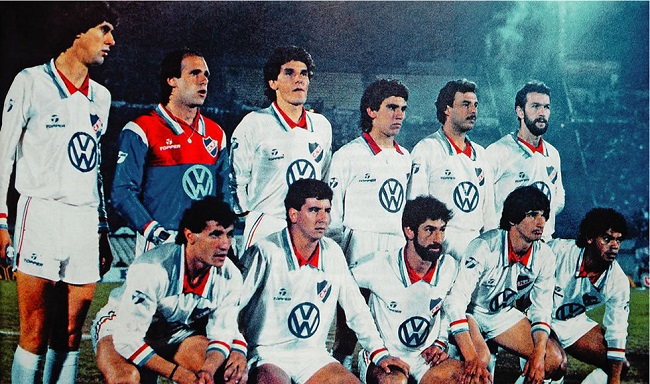
CONMEBOL changed the rules for the 1988 tournament, allowing 2 teams to move on from the initial group stage (previously it was only the group winner) and establishing a knockout phase immediately following to replace the second round robin that was in place before. This helped the Tricolores, who finished in second place in group 3: they would have been eliminated under the old rules, but moved on behind Colombian powerhouse América de Cali. The Colombians (long rumored to have ties to the Cali cartel, by the way) had lost the previous 3 Libertadores finals and were looking to finally break their bad streak. Nacional started off on the wrong foot with a scoreless tie against Wanderers, but recovered with a 3 game home winning streak: 2-0 versus América, 4-0 against Millonarios (the other Colombian team in the group) and 1-0 in the return match against the Bohemios. When América beat both Wanderers and Millonarios in Cali, that gave Nacional a spot in the next round with their Colombia trip still to take place. It’s a good thing, too; the Tricolores managed to tie América 0-0, but were embarrassed by Millonarios 6-1, a result that left them 1 point short of the group lead. Still, they were through, and that’s what mattered.
In the knockout round, Nacional first faced off against the Chilean Universidad Católica and barely qualified on away goals, tying 0-0 at home and 1-1 on the road. In the quarterfinals, the Tricolores had to contend with Argentinian side Newell’s Old Boys. Before that, though, the team added a key piece, as… wait… WAIT! OH MAH GAWD! IS THAT… IS THAT HUGO DE LEON’S MUSIC?!!! Yes, yes it was. The veteran defender was signed halfway through the season to solidify the back line and provide experience and leadership. De León was a veteran of two Libertadores-winning squads, Nacional’s 1980 world beaters and the 1983 Gremio team that prevented Peñarol from repeating as champs by besting them in the final. He had the pedigree and the hardware; would that be enough?
Once again, the team responded on the road, coming away with a valuable 1-1 tie; they then clinched a spot in the semifinals with a… em, peculiar 2-1 home win. See, in the 1980s CONMEBOL wasn’t so good at math, so they designed a tournament that ended up with 3 quarterfinal match-ups. To fix that, because no one over there gave a crap, they decided that the best quarterfinal loser would just become the 4th semifinalist. Lol, I can’t defend what can only be described as a ginormous clusterfuck; I’m just telling you what happened. Anyway, América beat Bolivian side Oriente Petrolero by a 3-1 aggregate score, and Argentinian power San Lorenzo dispatched defending champion Peñarol 1-0; Nacional was winning the return match against Newell’s 2-0, which would have made the Manyas the best loser. In the 66th minute, however, Nacional midfielder Jorge Daniel Cardaccio hammered home an own goal, leaping towards his own goal and heading the ball past keeper Jorge Seré. (it’s hard to find this stuff online, but you can see it starting at the 2:10 mark in this video)
Now, I’m not one to stoke the fires of conspiracy theories; while we know that all 3 deciding games were played on the same day, I have no idea whether they were happening at the same time, and besides there was a half hour left to play in this one anyway. So I’m not saying that Cardaccio dove at his own goal and smashed the ball with his forehead in order to screw Peñarol out of a semifinal spot; I’m just saying that the end result of his “mistake” were Manya-free semifinals, and I think we can all take solace in that. Cardaccio’s goal gave Newell’s the title of “Best Loser” (I mean if you can be called that, how can you turn it down), and left the defending champions out in the cold. And for that Cardaccio (who is also a famous Tricolores uncle, his nephew Mathías having played with Victorino the Younger in the 2007-08 squad) will forever be loved by the Nacional faithful.
Heading Down the Home Stretch

Anyway, in the semifinals the Tricolores were paired up with América (because they had so much fun the first time around) and maintained their unbeaten streak against the 3-time runners up: a tense 1-0 win in Montevideo was followed by their third straight 1-1 road tie. América was winning 1-0 and the bracket was headed to PKs, but forward Juan Carlos Lima, who later was a key piece in Peñarol’s late 1990’s run of 5 straight league titles and is therefore no longer a favored Nacional son, tied the game with 8 minutes left to send Nacional to the finals. Their opponent and last obstacle was… Newell’s Old Boys, because why the fuck not? The Argentinian side featured a young guy by the name of Gabriel Batistuta up front (you may have heard of him; he was Argentina’s all-time leading scorer until this fucking thing), although he was barely starting out and would not play a significant role in these 2 games. The First final was played in Rosario, and Newell’s got the win thanks to a 60th minute Jorge Gabrich goal. It wasn’t the best result, but the game itself showed that Nacional could handle Newell’s, and a 1-0 deficit wasn’t that terrible given that the return game would be played in Montevideo.
On October 26th Nacional and Newell’s stepped onto the Estadio Centenario grass for the deciding match. The Tricolores were determined to get back that goal advantage and did not have to wait long: in the 13th minute, Ernesto “Pinocchio” Vargas got a hold of a ball in the penalty area, spun around to get himself in position facing the goal, and put the ball into the net near the goalie’s left post. Vargas was an interesting candidate to wear the hero costume, having spent the first 7 years of his career at Peñarol. He was a gifted scorer and a permanent thorn in Nacional’s side, as well as a member of the 1982 Libertadores champions and the 1983 runners up. In 1987, he was told his services were no longer needed and took his talents to Nacional, ensuring he would be hated/loved by pretty much the entire country. A year later, he was scoring the opening goal in one of the biggest nights in Nacional’s history. Anyway, the Bolsos kept pushing forward, and got a second goal in the 37th minute from Santiago “the Basque” Ostolaza. With the 2-0 lead in hand, but knowing an away goal by Newell’s would swing the series the other way, the Tricolores maintained control of the game but could not get a third goal until the 80th minute. William “the Duck” Castro (the nicknames are the best part of this series, amirite?) made a run into the penalty area and was taken down by a Newell’s defender; team captain Hugo De León made the most of it, scoring to make it 3-0. Done deal, right?
See, you forgot this is CONMEBOL we’re talking about. The rules for this particular year said that if at the end of the 90 minutes the teams were tied on points (which they were, each having won a game), then goal differential didn’t matter, and an overtime period would be played. I mean, it was an improvement on previous tiebreakers (they used to have a third match in neutral territory in these cases), but still! After 2 15-minute OT periods, goal differential would all of a sudden count again, because magic! The worst part is that the away-goals-count-double rule was in place for the OT, meaning 1 Newell’s goal would send the game into PKs. And yes, away goals actually counted double, so even though Nacional would have a better overall goal differential, the series would be tied. This is some bullshit, fans. In any case, Newell’s had nothing left in the tank, so the OT was a fairly quiet affair. The only thing worth talking about was when Newell’s Jorge Pautasso and Nacional’s Héctor Morán were sent off in the 100th minute for trying to beat the crap out of each other. Good Times! At the end of the 30 minutes the score was still 3-0 in favor of the good guys, and Nacional was once again the Libertadores Cup champion, the last time a Uruguayan club team has lifted a major international trophy.
Nacional del Mundo
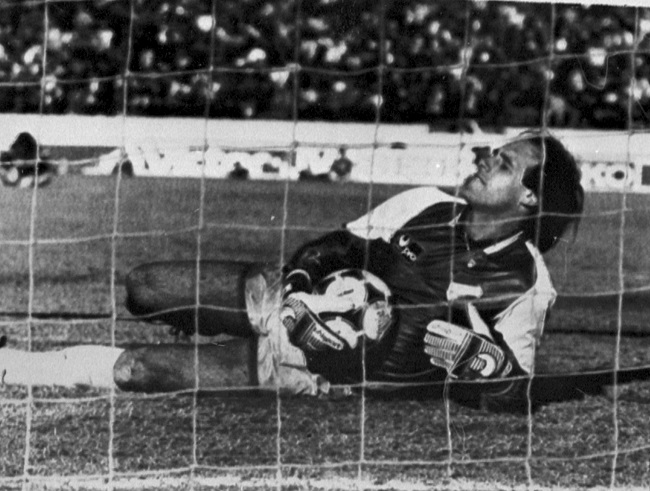
There was one more game to play, the Intercontinental Cup final, set for December 11th in Tokyo against European champions PSV Eindhoven. The Dutch squad was heavily favored and featured another young would-be star, Brazilian striker Romário, but Nacional was Nacional; the Tricolores actually took the lead 7 minutes in thanks to an Ostolaza header off a corner kick. Nacional dominated the first half and could have taken a bigger lead, but opportunistic defending and a ridiculous no-call by referee Jesús Díaz Palacio on a clear penalty (Colombian referees screwing over Uruguayan teams is an old and honored tradition). PSV pushed forward in the second half, but they weren’t creating much danger for the well-organized Bolso defense. Still, they had Romario, and 15 minutes from time the Brazilian striker said “Fuck you, PSV, I do it myself” and scored the tying goal on a great header. Once again, overtime was on the menu.
In extra time, PSV’s best asset went to work double time: 10 minutes in, Jesús Díaz looked into the Nacional penalty area from 40 yards away and called a PK on as obvious a dive as you will ever see. Dutch international Ronald Koeman converted, and the Tricolores were on the outside looking in. As the minutes passed, it looked more and more like they would fall just short, but nobody told Ostolaza that. Now here’s something you need to understand about El Vasco: he was no goal-scoring hero. He was a burly, tough midfielder, with a good head on his shoulders (he’s enjoyed a great career as a coach since hanging up his cleats) and a lot of heart, but this wasn’t Leo Messi here. He could put the ball in the net, especially on headers, but mostly he spent his time on the field stopping the other team from creating chances. And yet that season, every time Nacional needed a goal in a big spot there he was. He got the second goal against Newell’s in the Libertadores final, and he scored the first goal in this game. And now, with the last few seconds ticking off the clock, El Vasco struck again. As in the first goal, he set up near the far post on a corner kick, and again PSV’s goalie misjudged the ball and let it pass through. And there, waiting, was Ostolaza. He didn’t get a lot on this one, but the ball slowly flew towards the goal. A PSV defender got his foot on it and kicked it away, but by then it had already crossed the line. I guess even Colombian referees have hearts, because Jesús Díaz couldn’t bring himself to wave it off. He signaled the midfield spot and immediately ended the OT; the 2-2 final score meant we were off to PKs.
Strangers in a Strange Land
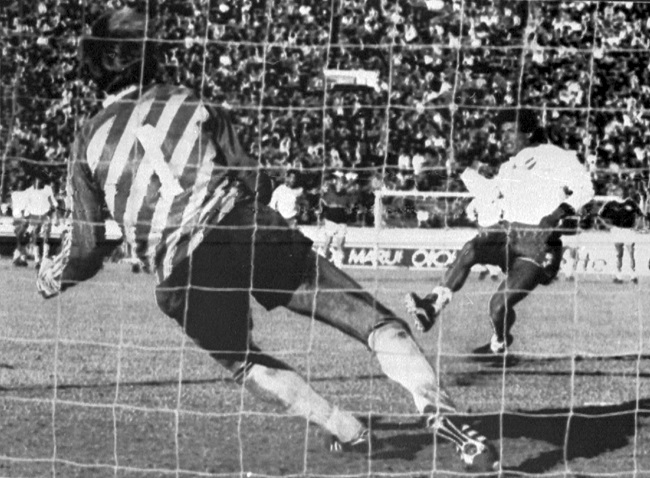
Let’s take a personal detour for a minute: 1988 was the year El Bolso and Jobu made the big trip to the US, so although I did not get to watch any of the campaign (we flew out in March and the Copa started in July), it was a hugely significant event in my life. Back before the time of the internet and Americans giving a crap about soccer, following Nacional’s progression through the tournament meant poring through local Spanish language papers and watching the Spanish TV network news shows hoping for a mention of the Tricolores; I’m pretty sure we found out about some of the games by actually calling relatives in Uruguay. I vividly remember listening to the Intercontinental final on the radio, but there are no such memories of any of the Libertadores games.
Now, as the players prepared for the spot kicks, we all stared at that radio as if it actually had a TV screen on it, and got ourselves ready as well. It was a nerve-wracking finale, fans. It went on forever, well past the standard 5 kicks per side; and each time we stared expectantly, waiting for the announcer to tell us what the hell had just happened. Both teams made their first kicks, but then Jorge Seré stopped PSV’s second one. Current Qatar national team coach (and yet another member of this team who ended up coaching the Tricolores) Daniel Carreño missed his, though, so we were still even. Morán missed the third one after PSV had converted, and both teams made their 4th shots, so going into the last set of PKs Nacional needed help. No worries! Seré put on his Superman cape again, stopping his second kick of the afternoon to give the Tricolores a chance. De León (of course it was De León) put the ball past the Dutch keeper to go to sudden death. Both teams made their next two; in the 8th round it was Seré again (AGAIN), but El Bolso favorite José Pintos Saldanha (I used to watch him play in Nacional’s reserve team when I was about 10 years old) wasted yet another opportunity. After matching conversions in the 9th round, Seré (seriously, did I even need to tell you?) stopped the next one, his 4th save out of 10 kicks (that’s a Steph-Curry-from-3-not-counting-the-NBA-Finals percentage, fans). That left Saldanha’s fellow defender Tony Gómez standing all alone in the glare of the spotlight, but this was TONY THE TIGER. Look at THIS MULLET, fans! That mullet says “I ain’t afraid of nothing!” Tony raced up to the ball and kicked it past the keeper like he’d been doing this his whole life. Nacional was the World Champion (no offense, Africa/Asia/CONCACAF/Oceania), and El Bolso’s downstairs neighbors wondered who the hell was making such a racket at 3 in the morning, come on man, we have to go to work in 4 hours!
It was all very surreal, like getting memory echoes from a previous life; I’m not sure that I would be able to describe what it was like to my kids, at least not in a way that they would relate to. It was a different world than the one we have today, but rooting the Tricolores on was one of the few familiar pleasures I experienced in a year filled with the new and the foreign. That’s what makes this particular team so dear to me. If the 1980 campaign was my first taste of true soccer magic, this one felt like a last image of something I would never be able to see in the same way again.

And that’s all for me, fans. You can see the PK shootout here, or you can actually watch the whole god damned game online for some reason. I’ll be back soon with another exciting chapter in the History of the Club Nacional de Football. See you then!
- The Charrúa Report: On the Right Foot - March 14, 2017
- The Charrúa Report: Campeones! - February 14, 2017
- The Charrúa Report: 48 Is Enough - January 11, 2017
- The Charrúa Report: Nico and the Sounders - December 14, 2016
- The Charrúa Report: King of the Single Rounders - December 12, 2016
- The Charrúa Report: Senseless - December 6, 2016
- The Charrúa Report: The Bum’s Rush - November 28, 2016
- The Charrúa Report: A Bump in the Road - November 16, 2016
- The Charrúa Report: Is It Priceline Time? - November 12, 2016
- The Charrúa Report: Closer to Fine - October 13, 2016
